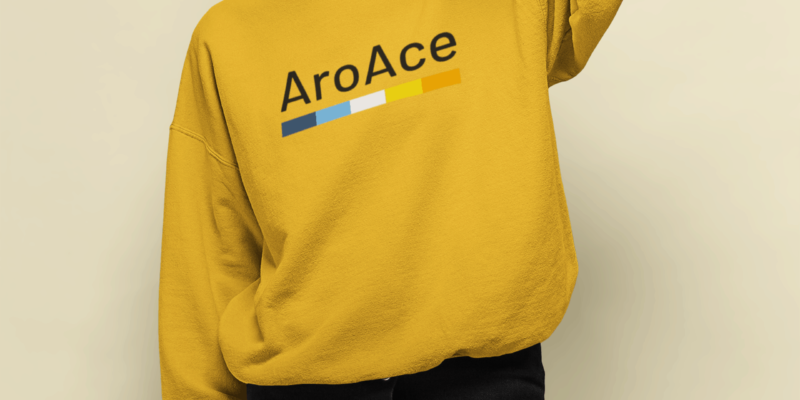Aroace from Within: Navigating Relationships and Self-Discovery
Aroace, short for aromantic asexual, refers to individuals who experience little to no romantic and sexual attraction towards others. This article aims to delve into the world of aroace individuals, exploring the intricacies of their identities and shedding light on the challenges they face in navigating relationships and self-discovery. Understanding the aroace identity is crucial in fostering inclusivity and promoting acceptance in our society.
Defining Aroace
To fully comprehend the experiences of aroace individuals, it is essential to understand the meaning of the term. Aroace is an umbrella term that encompasses individuals who identify as both aromantic and asexual. Aromantic refers to those who do not experience romantic attraction, while asexual refers to individuals who do not experience sexual attraction. Aroace individuals may identify with one or both of these aspects, forming a diverse and unique community.
The Importance of Understanding Aroace Identity
Recognizing and understanding the aroace identity is crucial for several reasons. Firstly, it helps dispel misconceptions and stereotypes surrounding aroace individuals. By acknowledging that aroace people exist and have valid experiences, we can combat erasure and promote inclusivity. Additionally, understanding aroace identity allows for better support and allyship, as it enables us to provide the necessary resources and create safe spaces for aroace individuals to express themselves authentically.
Purpose of the Article
The purpose of this article is to provide insight and education on the experiences of aroace individuals, specifically focusing on their journey of self-discovery and the challenges they face in navigating relationships. By sharing personal stories, exploring common struggles, and offering guidance, this article aims to foster empathy and understanding towards the aroace community. Through increased awareness, we can create a more inclusive society that respects and values the diverse identities and experiences of all individuals.
Exploring Aroace Identity
Understanding aromanticism and asexuality:
Aromanticism and asexuality are two closely related identities that fall under the umbrella term of aroace. Aromantic individuals do not experience romantic attraction, while asexual individuals do not experience sexual attraction. Aroace individuals may identify as both aromantic and asexual, or as one without the other. Understanding these identities is crucial in navigating relationships and self-discovery.
Intersectionality of aroace identity:
Aroace identity intersects with various aspects of a person’s identity, such as gender, race, and disability. It is important to recognize that aroace individuals can have unique experiences shaped by these intersections. Acknowledging and understanding these intersections helps create a more inclusive and supportive environment for aroace individuals.
Challenges faced by aroace individuals:
Aroace individuals often face challenges in a society that heavily values romantic and sexual relationships. They may encounter misconceptions, stereotypes, and pressure to conform to societal norms. Aroace individuals may also struggle with finding acceptance and understanding from their friends, family, and peers. It is important to address these challenges and foster a more inclusive and accepting society for aroace individuals.
Self-Discovery and Acceptance
Embracing one’s aroace identity can be a journey of self-discovery and acceptance. It involves exploring one’s feelings, desires, and relationships in a way that aligns with their own experiences. Self-reflection, education, and connecting with supportive communities can play a significant role in this process. By embracing their aroace identity, individuals can find empowerment and live authentically.
Building Healthy Relationships
For aroace individuals, building healthy relationships may involve redefining what love and connection mean to them. It is essential to communicate openly and honestly with partners, friends, and family about one’s aroace identity and the unique needs and boundaries that come with it. This allows for the development of relationships that are respectful, understanding, and fulfilling for all parties involved.
Navigating Intimacy and Intimate Relationships
Aroace individuals may have varied experiences with intimacy and intimate relationships. Some may prefer non-romantic, non-sexual forms of intimacy, while others may not seek it at all. It is important to respect and validate individual preferences and boundaries when it comes to intimacy. Navigating these aspects of relationships requires open communication, consent, and a willingness to understand and accommodate diverse experiences and needs.
Advocacy and Visibility
Advocacy and visibility play a crucial role in creating a more inclusive society for aroace individuals. By raising awareness, challenging stereotypes, and promoting understanding, we can work towards eradicating discrimination and fostering acceptance. Aroace individuals and allies can engage in activism, participate in online and offline communities, and share their stories to create positive change and support others in their journey of self-discovery.
What does the Aroace flag symbolize and represent?

The Aroace flag, also known as the Aromantic Asexual flag, consists of four horizontal stripes in various shades. The topmost stripe is dark green, symbolizing aromanticism, followed by a light green stripe representing the spectrum of romantic orientations. Next comes a gray stripe that represents gray-aromanticism and demisexuality, followed by a black stripe signifying asexuality. This flag was designed to be inclusive and representative of both aromantic and asexual individuals.
While many may not be familiar with the Aroace flag, it serves as an important symbol for those who identify as aromantic or asexual. It provides visibility for these often overlooked orientations and allows individuals to feel part of a larger community. The colors and design hold deep meaning for those who identify with them, serving as a source of pride and solidarity within the broader LGBTQ+ community.
As society continues to progress towards greater acceptance and understanding of diverse sexual orientations and identities, recognition of flags like the Aroace flag becomes increasingly important. By acknowledging the significance of symbols such as this flag, we can foster inclusivity and empathy for all individuals regardless of their sexual orientation.
Misconceptions and stereotypes
Being aroace, or identifying as both aromantic and asexual, comes with its fair share of misconceptions and stereotypes. It is important to address these misconceptions to foster a better understanding and acceptance of aroace individuals.
1. Emotionless or cold
One common misconception is that aroace individuals are emotionless or cold. This is far from the truth. Aroace individuals experience a wide range of emotions, just like anyone else. The absence of romantic or sexual attraction does not equate to a lack of emotions.
2. Incapable of love
Another stereotype is that aroace individuals are incapable of love. However, love is not limited to romantic or sexual relationships. Aroace individuals can experience and express love in various forms, such as platonic love, familial love, or love for hobbies and interests.
3. Lonely or unhappy
There is a misconception that aroace individuals are destined to be lonely or unhappy. While it is true that aroace individuals may face unique challenges in navigating relationships, it does not mean they are doomed to a life of loneliness. Aroace individuals can lead fulfilling and happy lives, forming deep connections with others based on friendship and shared interests.
4. Just a phase
Some people may dismiss aroace identities as “just a phase” or something that individuals will eventually grow out of. It is important to acknowledge and respect aroace individuals’ self-identifications. Aroace identities are valid and should be accepted without judgment or skepticism.
5. Aroace individuals don’t experience attraction at all
Contrary to popular belief, aroace individuals can still experience aesthetic, sensual, or emotional attraction. While they may not experience romantic or sexual attraction, they can appreciate beauty, enjoy physical touch, and form deep emotional connections with others.
Lack of representation and support
One of the biggest challenges that aroace individuals face is the lack of representation and support in society. The aroace community, which encompasses people who identify as both aromantic and asexual, often struggle to find relatable and accurate portrayals of their experiences in media, literature, and popular culture. This dearth of representation can lead to feelings of isolation and invisibility, making it difficult for aroace individuals to fully understand and embrace their own identities.
Media and popular culture
In mainstream media and popular culture, the experiences of aroace individuals are often overlooked or misrepresented. Romantic and sexual relationships are commonly portrayed as the norm, with little to no acknowledgment of alternative orientations such as aromanticism and asexuality. This lack of representation can perpetuate the misconception that a romantic and sexual relationship is the ultimate goal and fulfillment for everyone, leaving aroace individuals feeling marginalized and invalidated.
Support and understanding
Another significant challenge for aroace individuals is the lack of support and understanding from friends, family, and society at large. Aromantic and asexual identities are often misunderstood or dismissed as phases, resulting in invalidation and erasure of their experiences. This can cause aroace individuals to question their own feelings and identities, leading to self-doubt and a struggle to find acceptance.
It is crucial for society to recognize and validate the existence and experiences of aroace individuals. By increasing representation in media, literature, and popular culture, we can help create a more inclusive and understanding society where aroace individuals feel seen, heard, and supported.
Navigating Relationships as an Aroace Individual
Being an aroace individual, navigating relationships can be a unique experience. It requires effective communication, setting boundaries and expectations, and building fulfilling non-romantic relationships.
Communicating your identity to others
One of the most crucial aspects of navigating relationships as an aroace individual is communicating your identity to others. This can be a challenging task, as aroace identities are often misunderstood or unknown by many. It is important to educate those around you about what being aroace means to you. By being open and honest about your identity, you can foster understanding and create a supportive environment within your relationships.
Setting boundaries and expectations
Setting boundaries and expectations is essential for any relationship, but it becomes even more crucial for aroace individuals. Since romantic and sexual attraction may not be present, it is important to communicate your boundaries and expectations clearly. This can include discussing physical affection, emotional intimacy, and the level of commitment you are comfortable with. By setting these boundaries, you can ensure that your relationships align with your needs and comfort levels.
Building fulfilling non-romantic relationships
While romantic relationships may not be the focus for aroace individuals, building fulfilling non-romantic relationships can bring immense joy and support. It is important to nurture friendships and other non-romantic connections that fulfill your emotional needs. These relationships can provide companionship, understanding, and a sense of belonging. By investing in these connections, you can create a strong support system and enhance your overall well-being.
HTML
Friendship and platonic love
The importance of friendships
Friendships play a crucial role in the life of an aroace individual. For someone who identifies as both aromantic and asexual, friendships often become the primary source of emotional connection and support. These relationships provide a safe space to express oneself, share experiences, and form deep connections with others. Friendships can be just as fulfilling and meaningful as romantic relationships, if not more so.
Navigating boundaries and expectations
Understanding and communicating boundaries is essential when it comes to navigating friendships as an aroace person. Since aroace individuals may not experience romantic or sexual attraction, it’s important to have open and honest conversations with friends about expectations and needs. This can help establish clear boundaries and prevent any misunderstandings or discomfort. It’s also important to acknowledge that friendships can evolve and change over time, and that’s perfectly normal.
Exploring different types of love
Being aroace doesn’t mean lacking love or affection. Aroace individuals can experience and appreciate various forms of love, including platonic love. Platonic love is characterized by deep emotional connections, care, and support without the romantic or sexual aspects. Exploring and nurturing these types of relationships can be incredibly fulfilling and offer a different perspective on what love means.
Queerplatonic relationships
Understanding Queerplatonic Relationships
Queerplatonic relationships, often abbreviated as QPRs, are unique and non-traditional forms of relationships that go beyond the boundaries of conventional romantic or platonic connections. They are characterized by deep emotional intimacy, commitment, and a strong bond that exists outside the realm of romantic or sexual attraction. In a queerplatonic relationship, partners may experience a profound sense of companionship, support, and love, akin to that of a romantic partnership, but without the romantic or sexual aspect.
Exploring Boundaries and Expectations
One of the key aspects of navigating queerplatonic relationships is establishing clear boundaries and managing expectations. Each partner should openly communicate their needs, desires, and comfort levels to ensure that both parties feel respected and understood. This might involve discussing the level of emotional intimacy, physical affection, or time commitments that each person is comfortable with. By setting these boundaries early on, partners can create a safe and secure space for their relationship to thrive.
Embracing Non-Traditional Intimacy
Queerplatonic relationships often challenge societal norms surrounding intimacy. They encourage partners to redefine what intimacy means to them, beyond the boundaries of romance or sexuality. This can involve exploring emotional vulnerability, deep connections, and shared experiences that foster a sense of closeness and understanding. By embracing non-traditional forms of intimacy, queerplatonic partners can create a unique and fulfilling bond that is tailored to their individual needs and desires.
Supporting Each Other’s Individuality
In a queerplatonic relationship, it is crucial to honor and support each other’s individuality and autonomy. This means allowing space for personal growth, pursuing independent interests, and maintaining separate identities outside of the relationship. By valuing and encouraging each other’s autonomy, partners can foster a healthy and sustainable queerplatonic relationship that allows for personal development while nurturing the connection they share.
Challenges and Benefits
Like any relationship, queerplatonic relationships come with their own set of challenges and benefits. One of the challenges may be navigating societal expectations and misconceptions surrounding relationships that do not fit into traditional categories. However, the benefits of a queerplatonic relationship lie in the freedom to define and shape the connection based on mutual understanding and consent. It allows for a deep and meaningful connection that transcends societal norms, providing a space for individuals to authentically express themselves and explore their identities. By embracing queerplatonic relationships, individuals can navigate their journey of self-discovery while forging connections rooted in love, respect, and understanding. These relationships have the potential to provide immense support and companionship, allowing individuals to thrive both as individuals and as partners in a non-romantic, non-sexual context.
Self-Discovery and Personal Growth
Embracing your aroace identity
Exploring individual preferences and desires
Finding fulfillment outside of romantic and sexual relationships
Embracing Your Aroace Identity
Discovering and accepting one’s aroace identity can be a transformative journey. It involves acknowledging and embracing the absence of romantic and sexual attraction, and recognizing that this is a valid and meaningful way to experience the world. Embracing your aroace identity means accepting and celebrating who you are, and understanding that your worth is not determined by your relationship status or sexual orientation.
Exploring Individual Preferences and Desires
Being aroace allows individuals the freedom to explore and understand their unique preferences and desires. Without the pressure to conform to societal expectations of romantic or sexual relationships, aroace individuals can focus on discovering what brings them joy and fulfillment. This exploration may involve exploring different forms of intimacy, such as platonic relationships, deep friendships, or hobbies and passions that bring a sense of purpose and satisfaction.
Finding Fulfillment Outside of Romantic and Sexual Relationships
Being aroace opens up a world of possibilities for finding fulfillment outside of traditional romantic and sexual relationships. Aroace individuals can build deep connections and find joy in non-romantic and non-sexual relationships, such as friendships, chosen families, or communities. They can also invest time and energy into personal growth, self-care, and pursuing their own dreams and aspirations. By recognizing and valuing these alternative sources of fulfillment, aroace individuals can lead fulfilling and meaningful lives on their own terms.
Hobbies and passions
Exploring hobbies and passions plays a significant role in self-discovery for aroace individuals. While society often places a strong emphasis on romantic relationships, it’s important to remember that our identities are not solely defined by our romantic or sexual attractions. Engaging in activities that bring joy and fulfillment can help us connect with ourselves on a deeper level.
Embracing Creative Outlets
One way to explore our interests is through creative outlets. Whether it’s painting, writing, playing an instrument, or dancing, these activities can serve as a form of self-expression and a way to channel our emotions. Engaging in creative hobbies allows us to tap into our innermost thoughts and feelings, providing a sense of empowerment and self-discovery.
Connecting with Nature
Nature has a way of grounding us and providing solace. Spending time outdoors, whether it’s hiking in the mountains, lounging at the beach, or simply taking a walk in the park, can be a powerful way for aroace individuals to connect with themselves and the world around them. Nature’s beauty and tranquility can offer a sense of peace and a space for self-reflection.
Exploring Intellectual Pursuits
Engaging in intellectual pursuits, such as reading, learning a new language, or delving into scientific research, can be incredibly fulfilling for aroace individuals. These activities provide opportunities for personal growth, expanding our knowledge and understanding of the world. Intellectual exploration can also foster a sense of self-confidence and accomplishment.
Remember, hobbies and passions are unique to each individual. It’s essential to explore different activities and find what resonates with you personally. Embracing these hobbies and passions can help you navigate your own path of self-discovery and create a fulfilling life beyond societal expectations.
Self-care and self-love
When it comes to navigating relationships and self-discovery as an aroace individual, self-care and self-love play crucial roles. It is important to prioritize taking care of your own emotional, mental, and physical well-being.
Setting boundaries
One aspect of self-care is setting boundaries in relationships. As an aroace person, you may have different needs and desires compared to others. Communicating your boundaries honestly and assertively is essential to maintaining healthy relationships.
Exploring personal interests
Engaging in activities and hobbies that bring you joy and fulfillment is an important part of self-care. Take the time to explore and discover your own passions and interests, allowing yourself to grow and thrive independently.
Practicing self-compassion
Self-love is a vital aspect of self-care. Show yourself kindness and understanding, especially during moments of self-discovery and self-reflection. Embrace your unique identity as an aroace individual and celebrate your journey.
Seeking support
Building a support network of understanding and accepting individuals can greatly contribute to your well-being. Reach out to trusted friends, family members, or online communities who can provide guidance, empathy, and validation throughout your journey.
Conclusion
In this blog entry, we have delved into the experiences and challenges faced by aroace individuals in navigating relationships and self-discovery. We explored the unique aspects of being aromantic and asexual, and how these identities intersect to shape one’s understanding of themselves and their place in the world.
Throughout the discussion, we emphasized the importance of validation and support for aroace individuals. It is crucial to recognize and respect their identities, as well as to create spaces where they can freely express themselves without judgment or pressure to conform to societal norms.
For aroace individuals who may be struggling to find acceptance or understanding, we want to offer words of encouragement. You are valid, and your experiences are valid. Embrace your identity and surround yourself with a supportive community that celebrates and uplifts you for who you are.
Reframing Relationships
One key takeaway from this exploration is the need to reframe our understanding of relationships. Aroace individuals may not experience romantic or sexual attraction in the same way as others, but that does not diminish the value and depth of the connections they form. By broadening our perspective, we can appreciate the beauty of diverse relationships and foster greater inclusivity.
Fostering Understanding and Acceptance
It is imperative that we strive for a society that embraces and understands aroace individuals. We urge everyone to educate themselves about aromanticism and asexuality, challenging misconceptions and stereotypes. By promoting empathy, compassion, and respect, we can create a safer and more inclusive world for aroace individuals to thrive.
















